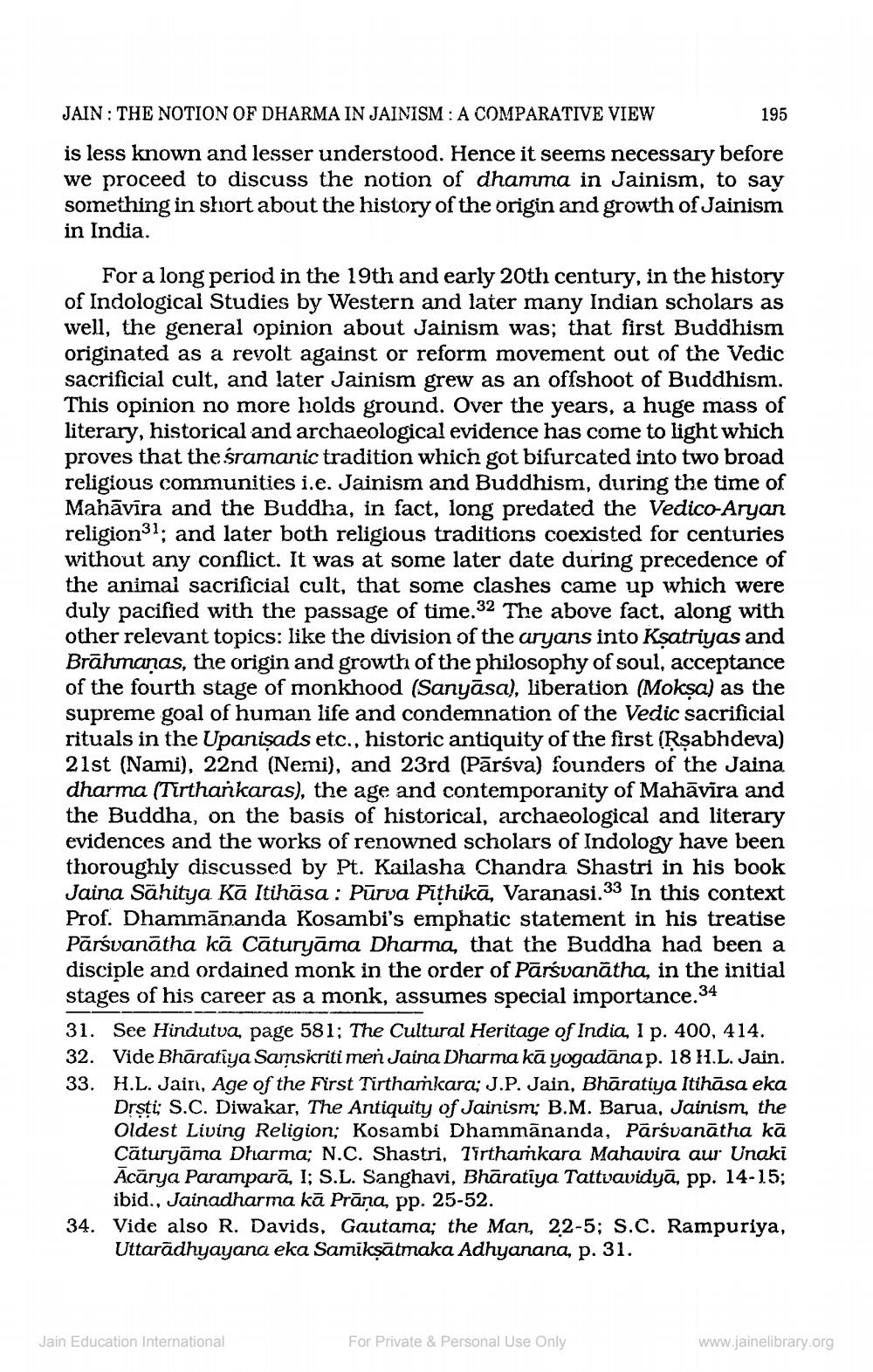________________
JAIN: THE NOTION OF DHARMA IN JAINISM: A COMPARATIVE VIEW
is less known and lesser understood. Hence it seems necessary before we proceed to discuss the notion of dhamma in Jainism, to say something in short about the history of the origin and growth of Jainism in India.
For a long period in the 19th and early 20th century, in the history of Indological Studies by Western and later many Indian scholars as well, the general opinion about Jainism was; that first Buddhism originated as a revolt against or reform movement out of the Vedic sacrificial cult, and later Jainism grew as an offshoot of Buddhism. This opinion no more holds ground. Over the years, a huge mass of literary, historical and archaeological evidence has come to light which proves that the śramanic tradition which got bifurcated into two broad religious communities i.e. Jainism and Buddhism, during the time of Mahavira and the Buddha, in fact, long predated the Vedico-Aryan religion31; and later both religious traditions coexisted for centuries without any conflict. It was at some later date during precedence of the animal sacrificial cult, that some clashes came up which were duly pacified with the passage of time.32 The above fact, along with other relevant topics: like the division of the aryans into Ksatriyas and Brāhmaṇas, the origin and growth of the philosophy of soul, acceptance of the fourth stage of monkhood (Sanyāsa), liberation (Mokṣa) as the supreme goal of human life and condemnation of the Vedic sacrificial rituals in the Upanisads etc., historic antiquity of the first (Rṣabhdeva) 21st (Nami), 22nd (Nemi), and 23rd (Pārsva) founders of the Jaina dharma (Tirthankaras), the age and contemporanity of Mahavira and the Buddha, on the basis of historical, archaeological and literary evidences and the works of renowned scholars of Indology have been thoroughly discussed by Pt. Kailasha Chandra Shastri in his book Jaina Sahitya Kā Itihasa: Purva Piṭhikā, Varanasi.33 In this context Prof. Dhammānanda Kosambi's emphatic statement in his treatise Pārsvanatha kā Cāturyāma Dharma, that the Buddha had been a disciple and ordained monk in the order of Pārsvanatha, in the initial stages of his career as a monk, assumes special importance.34
195
31. See Hindutva, page 581; The Cultural Heritage of India, I p. 400, 414. 32. Vide Bharatiya Samskriti men Jaina Dharma kā yogadāna p. 18 H.L. Jain. 33. H.L. Jain, Age of the First Tirthamkara; J.P. Jain, Bharatiya Itihāsa eka
Drşti; S.C. Diwakar, The Antiquity of Jainism; B.M. Barua, Jainism, the Oldest Living Religion; Kosambi Dhammananda, Pārśvanātha kā Căturyāma Dharma; N.C. Shastri, Tirthamkara Mahavira aur Unaki Acarya Parampara, I; S.L. Sanghavi, Bharatiya Tattvavidyā, pp. 14-15; ibid., Jainadharma kā Prāna, pp. 25-52.
34. Vide also R. Davids, Gautama; the Man, 22-5; S.C. Rampuriya, Uttaradhyayana eka Samikṣātmaka Adhyanana, p. 31.
Jain Education International
For Private & Personal Use Only
www.jainelibrary.org




